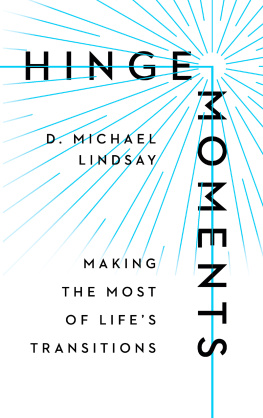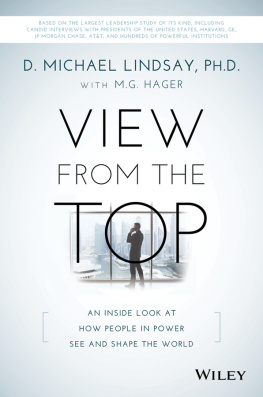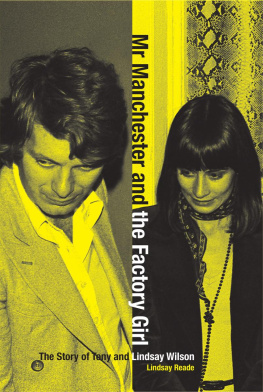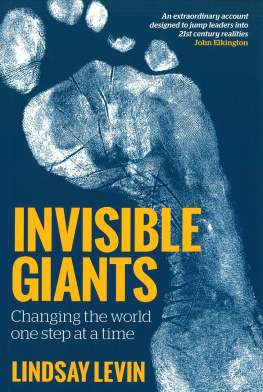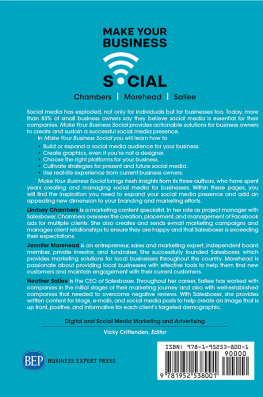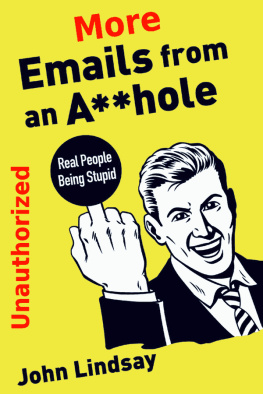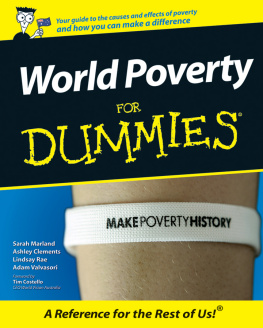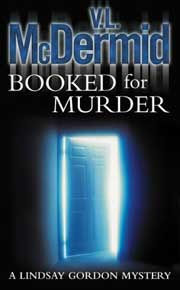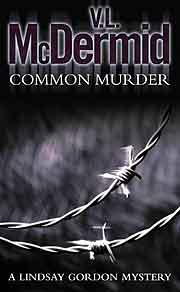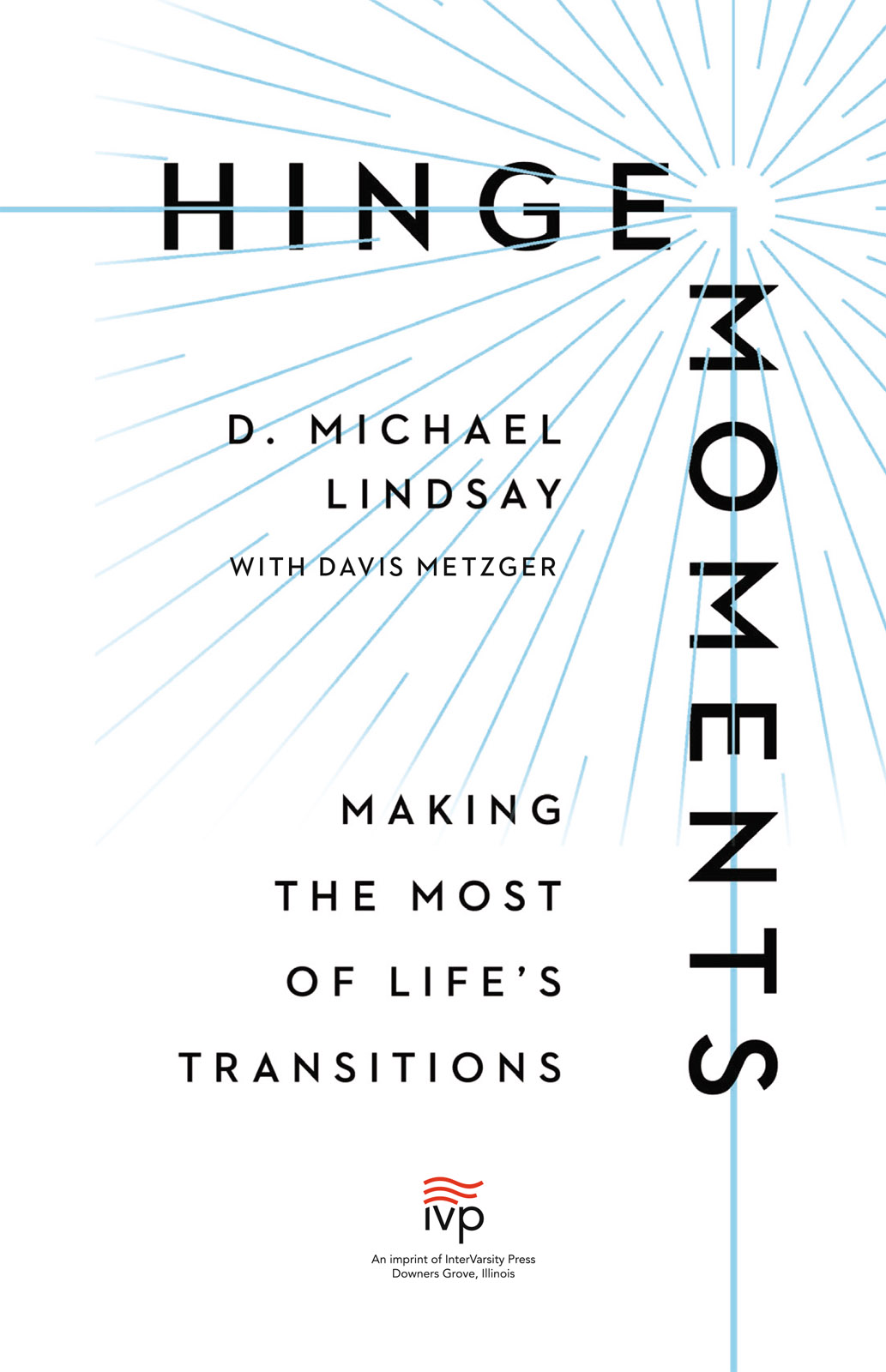Sommaire
Pagination de l'dition papier
Guide
InterVarsity Press
P.O. Box 1400, Downers Grove, IL 60515-1426
ivpress.com
2021 by D. Michael Lindsay
All rights reserved. No part of this book may be reproduced in any form without written permission from InterVarsity Press.
InterVarsity Pressis the book-publishing division of InterVarsity Christian Fellowship/USA, a movement of students and faculty active on campus at hundreds of universities, colleges, and schools of nursing in the United States of America, and a member movement of the International Fellowship of Evangelical Students. For information about local and regional activities, visit intervarsity.org.
All Scripture quotations, unless otherwise indicated, are taken from The Holy Bible, New International Version, NIV. Copyright 1973, 1978, 1984, 2011 by Biblica, Inc.Used by permission of Zondervan. All rights reserved worldwide. www.zondervan.com. The NIV and New International Version are trademarks registered in the United States Patent and Trademark Office by Biblica, Inc.
While any stories in this book are true, some names and identifying information may have been changed to protect the privacy of individuals.
The publisher cannot verify the accuracy or functionality of website URLs used in this book beyond the date of publication.
Cover design and image composite: David Fassett
Image: abstract sunburst: -1001- / iStock / Getty Images Plus
ISBN 978-0-8308-4180-6 (digital)
ISBN 978-0-8308-4179-0 (print)
This digital document has been produced by Nord Compo.
Dedicated to
Davis, Herman, Kurt, Rebecca, and William,
wonderful partners for navigating
lifes hinge moments
Introduction
IN A QUIET HOSPITAL ROOM in North Carolina, an eager young doctor with a bright future evaluates his elderly patient with not much future left at all. She has a terminal heart condition, inoperable. All he can do is treat her symptoms and pain as the two of them wait for her time to run out.
As the physician visits the dying woman during his daily rounds, they gradually get to know one another. During one particularly poignant conversation, he learns that the woman is a deeply religious Christian. As a confident atheist, he assumes that as her condition deteriorates, her faith will do the same, as she realizes her God is not coming to the rescue. Yet with every passing day, his patients faith seems to grow stronger even as her body weakens.
Having been exposed years earlier to the writings of Heisenberg, Dirac, and Einstein, the doctor finds his patients religious beliefs antiquated but charming. But then, he is taken aback by her forthright inquiry: Doctor, I have been telling you what I believe, but what do you believe?
Its not that he takes no joy in what his patient would call creation. Rather, he finds the universe deeply satisfying. He has long relished the idea that it can be understood and explained in discrete mathematical formulaethat it can present no dilemma that a robust theorem cannot answer. But in this case, he is shaken a bit when asked about belief. He murmurs something about the beauty of the natural world and leaves the conversation with a degree of unease.
He is one of the best trained scientists of his generation. By his own reckoning, there is no one who better understands the systems and laws that keep nature running. But he is deeply unsettled by the way the dying woman sleeps peacefully in her hospital bed while he lies awake each night haunted by her question. How can she be so confident of her view of the world and her place in it? Shouldnt she, at deaths doorstep, be the sleepless one?
He becomes convinced that his inability to answer her question or find consolation in his view of the mechanical universe is intellectually unacceptable. In search of a fresh perspective, he visits a local minister, who hands him a book by Oxford don C. S. Lewis, which he reads cover to cover. Over the next two years, the young physician reads voraciously about Buddhism, Christianity, Hinduism, Islam, and Judaism, examining the data about their roots and their claims, seeking to find one that would help him satisfactorily answer the dying womans question.
Ultimately, while hiking in Oregons Cascade Mountains, he comes to the conclusion that the claims of Christianity best explain what he sees around him. He begins to embrace the faith of his former patient, who had begun a kind of cascade within him with her one honest question. His radical internal shift doesnt change much on the outside. He still loves his work as a scientist and doesnt intend to redirect his efforts into religious service. His sense of meaning and purpose, however, has refocused entirely. Indeed, this faith decision would become the fulcrum for a career that would eventually reach the apex of scientific renown and public service.
This is the story of Francis Collins, one of our generations leading scientific authorities. Not only did he go on from that North Carolina residency program to lead the five research teams that mapped the human genomethe most significant scientific discovery of our lifetimebut he also held one of the longest directorships in history of the National Institutes of Health, appointed to the role first by President Obama and then reappointed by President Trump. His faith decision became a significant turning point, one that not only shaped his life butby virtue of his leadership roles in the decades sincethe lives of many others.
What Are Hinge Moments?
There are particular moments in our own lives that are very much like Collinss awkward instant when he had no answer to his patients inquiry. We realize, sometimes in a flash, that something has to changeis going to changewhether we like it or not. Collins could never go back to his spiritual complacency. He had to move in one direction or another.
What follows these instances will depend intrinsically on the decisions we make and the actions we take. These are hinge momentsopportunities to open (or to close) doors to various pathways of our lives.
Such moments are axial by nature, representing a fixed time, place, or event with consequences for the rest of our days. Getting them right can change our lives for the better. Getting them wrong can pose problems for years to come. Each of us is given a finite number of these hinge moments in life. In total, they may represent only a few hundred minutes out of our total lives of seventy or eighty years, but they have an outsized impact on the other thirty-seven million minutes of our time on earth. For Francis Collins, arriving at a better answer for what he believed about the nature of the universe and the afterlife began when he opened the door to exploring the possibility of universal truth. And by his own account, his life was forever changed.
But there were actually two hinge moments in the hospital room that day. Even as Dr. Collins was encountering a pivotal instance early in his career, that woman in the hospital bed was approaching one of her last. After all, how we approach deathfor ourselves and those we loveis itself a decision.
Some periods of transition are predictable in their arrival. You plan to ask a certain someone to marry you, and you plan for monthseven yearsin advance. Or you start contemplating your college decision as a junior in high school. Or you start planning for the birth of your first child the moment you see a positive pregnancy test. These are the sorts of significant transitions that we can anticipate, even prepare for. Death is the last of these hinge moments we face in life. The hospitalized woman knew hers was coming, and she slept soundly because she felt prepared for it.

